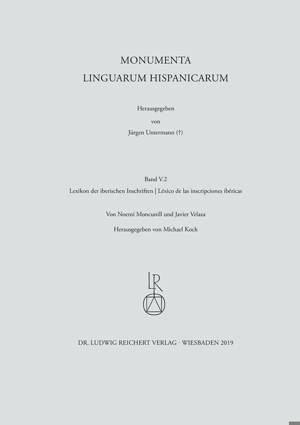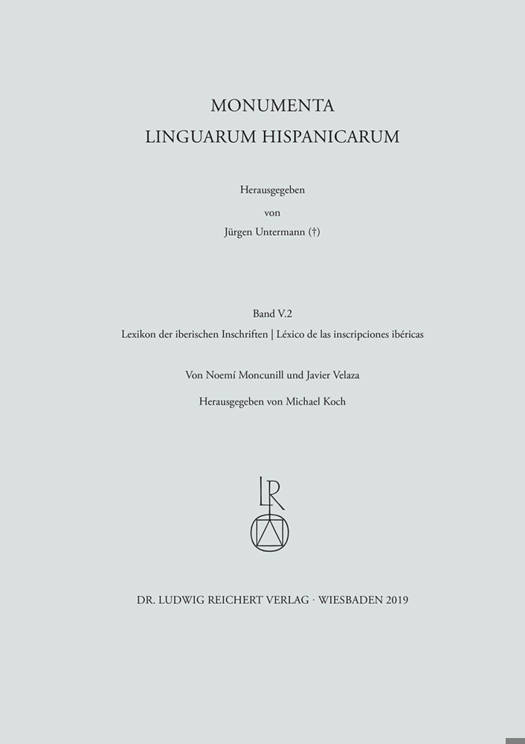
- Retrait en 2 heures
- Assortiment impressionnant
- Paiement sécurisé
- Toujours un magasin près de chez vous
- Retrait gratuit dans votre magasin Club
- 7.000.0000 titres dans notre catalogue
- Payer en toute sécurité
- Toujours un magasin près de chez vous
Lexikon Der Iberischen Inschriften / Lexico de Las Inscripciones Ibericas
Monumenta Linguarum Hispanicarum. Band V, 2
Noemi Moncunill, Javier Velaza
166,45 €
+ 332 points
Description
The Iberian language is documented by a rich epigraphic corpus of some 2,300 inscriptions on different materials covering a period of more than five centuries (late 5th century BCE to 1st century CE) and a vast territory of the Mediterranean basin, from southern France to eastern Andalusia. It is currently the most intensively attested amongst the so-called Palaeohispanic languages , that is the local languages spoken in the Iberian Peninsula before Latin became widespread. Although our knowledge of Iberian has increased substantially in recent years, the language still remains largely undeciphered: in the current state of the art, we are able to read the inscriptions and interpret the meaning of the most formulaic of them thanks to criteria of epigraphic typology and the identification of personal names, but longer texts remain in most cases obscure. Given the scarcity of bilingual inscriptions and the difficulties in finding linguistic cognates, the method of analysis that is usually applied is that of internal combinatory comparison, as developed in Jurgen Untermann's works.This new volume in the Monumenta Linguarum Hispanicarum series (MLH V.2), written by N. Moncunill and J. Velaza, provides an annotated glossary of the Iberian language as known through its epigraphic corpus. Although inserted in its corresponding place of MLH, this work reflects the state of knowledge of the Iberian language and its epigraphic culture at the time of its publication. This is the reason why it not only includes the inscriptions collected in the first three volumes of MLH - namely, those devoted respectively to the monetary legends (MLH I), the Iberian inscriptions of southern France (MLH II) and the Iberian inscriptions of Spanish territory (MLH III) - but also incorporates the texts found subsequently, until 2015.
Spécifications
Parties prenantes
- Auteur(s) :
- Editeur:
Contenu
- Nombre de pages :
- 600
- Langue:
- Allemand
- Collection :
Caractéristiques
- EAN:
- 9783954902910
- Date de parution :
- 26-08-19
- Format:
- Livre relié
- Format numérique:
- Genaaid
- Dimensions :
- 215 mm x 301 mm
- Poids :
- 1700 g

Seulement chez Librairie Club
+ 332 points sur votre carte client de Librairie Club
Les avis
Nous publions uniquement les avis qui respectent les conditions requises. Consultez nos conditions pour les avis.






